Kale is a green leafy veggie that looks similar to leaves of spinach, but the texture on the outside is strange and it has wrinkled leaves. One thing that everybody knows about kale is how good and healthy it is and some even considered it to be a superfood. We all use it for smoothies, salads, and as a side ingredient for many recipes. Now, let’s see if our guinea pigs can eat kale.
Can guinea pigs eat kale? Guinea pigs can eat kale but only in moderation due to high amounts of calcium. Kale provides many health benefits for guinea pigs because it’s rich in vitamin C, vitamin A, fibers and antioxidants but also at the same time low in calories and fat.
Every detail related to kale and guinea pigs and even the nutritional facts will be explained in the following sections of the article. Next to the health benefits, we will also mention any possible risks that kale can cause guinea pigs. Let’s start!
Table of Content
Is Kale Good for Guinea Pigs? | Health Benefits
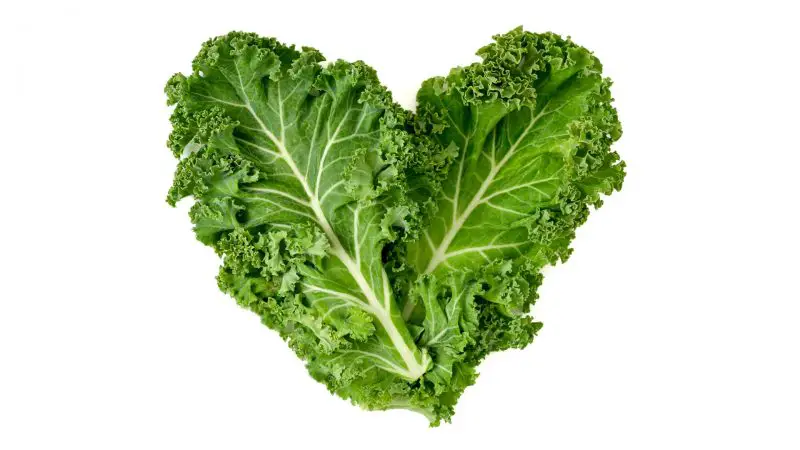
If you are feeding kale to guinea pigs, it would be good to know what health benefits it has for guinea pigs. The following are just some of them:
- Low in fat – Kale is low in fat. So, even if it’s consumed in high amounts, it cannot change the weight of your guinea pig. It is leafy and light, so there is no risk of obesity.
- Healthy blood vessels – Because it is low in fat, kale is healthy for the blood vessels. With kale, the whole cardiovascular system will stay functional.
- Increases thirst – This can be a good thing if your guinea pig is not fond of the water bottle. Kale contains sodium. This could increase the thirst so the cavy would drink more from its water bottle.
- Energy – With proteins and carbs, the guinea pig can have enough energy for any activity on a daily basis.
- Good digestion – The fibers in kale are amazing for gut health. A deficit of fibers can cause constipation, but also an excess of fibers can cause diarrhea or loose stool. So, serve in moderation.
- Antioxidants – Vitamin A is the protector of overall health. It removes free radicals that can cause damage to the body, such as early aging or different diseases.
- Prevention from scurvy – When guinea pigs lack vitamin C, they get the disease called scurvy (Symptoms: rough coat, swollen joints, less appetite, diarrhea, internal bleeding).
- Healthy blood – Kale contains good amounts of iron. This iron makes the blood strong and with that comes energy as well. The deficit of iron results in anemia and low energy or insufficient appetite.
- Less stress and healthy organs – The vitamin B6 makes all of the organs healthy. Most importantly, it removes stress so guinea pigs can sleep much better.
Nutrition Facts of Kale for Guinea Pigs
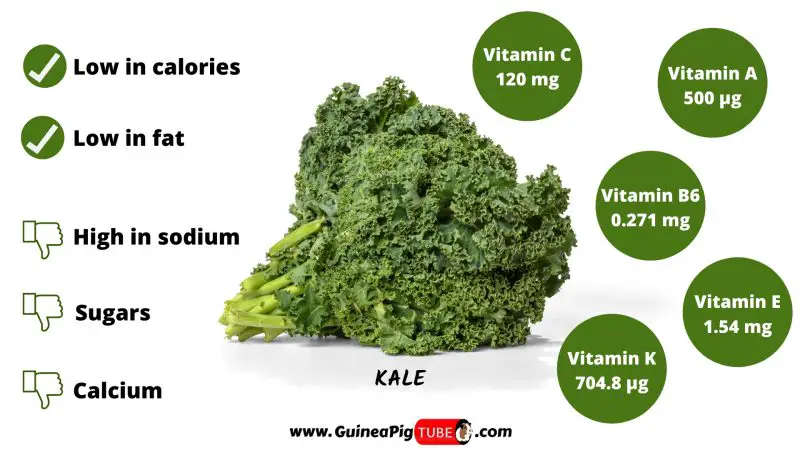
These are the nutrition facts per 100 g of kale (around 3.5 oz of kale):
- Low in calories – 49 calories. This is not much for a vegetable and is not fattening as well.
- Low in fat – Since kale has just 0.93 g of fat, it enables blood vessels to stay unclogged. Thus, the overall cardiovascular health will be good.
- High in sodium – Kale has high levels of sodium (38 mg), which can cause the formation of kidney stones in guinea pigs.
- Carbs – 8.75 g and as we all know, carbs give energy.
- Fibers – Kale has 3.6 g of fibers and they are vital for good digestion.
- Sugars – There is also some sugar in kale, around 2.26 g. Sugar is not healthy for the guinea pigs but this amount is normal.
- Protein – 4.28 g of protein provides better disease resistance and healthy muscles.
- Vitamin A – 500 µg. This vitamin is probably the best antioxidant. Vitamin A keeps the immunity in good shape but also makes kidneys, lungs, vision, and skin healthy too.
- Vitamin C – 120 mg of the crucial vitamin for guinea pigs. This is great news because the guinea pigs cannot survive without vitamin C.
- Calcium – Kale has 150 mg of calcium,. This is not really good for guinea pigs because too much calcium can cause bladder stones.
- Iron – 1.47 mg. This is good for reproduction, growth, and development.
- Vitamin B6 – 0.271 mg. Vitamin B6 has many benefits. Lack of it can increase skin sensitivity in guinea pigs.
- Magnesium – 47 mg. Magnesium deficiency in young guinea pigs can cause hair loss, decreased growth, and activity.
- Lutein + zeaxanthin – 8198 µg. These are good antioxidants and can help against eye problems in guinea pigs.
- Vitamin E (alpha-tocopherol) – 1.54 mg. Vitamin E is good for muscles, immune system and it also helps with inflammation.
- Vitamin K (phylloquinone) – 704.8 µg. This is an important nutrient. It is good for healthy bones and blood coagulation.
- Potassium – 491 mg. Adequate intake provides healthy blood pressure, a lower risk of heart disease, and benefits for muscle cells.
Is Kale Bad for Guinea Pigs? | Possible Risks
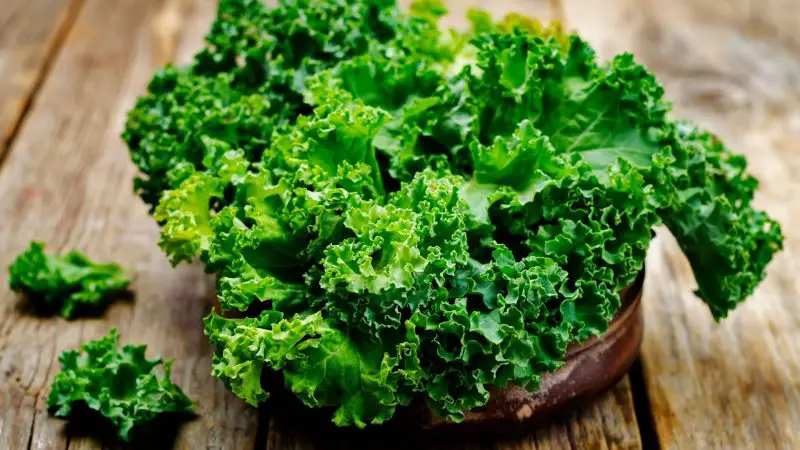
You can feed your guinea pig kale, even it contains some nutrients that can cause health problems, but in smaller serving sizes and not every day. Let’s see what are the possible risks of giving your guinea pigs kale.
Excessive Thirst (If Fed in High Amounts)
If kale is served in high amounts and also too often, the guinea pig will be begging for water and will urinate even more. This is not a life or death situation, but the serving sizes have to be moderate. After all, too much sodium affects high blood pressure as well.
Bad Digestion From Sugars
Guinea pigs cannot digest sugars properly. The stomach of the guinea pig is fragile, and sugars can cause them cramps or aches.
Bladder Stones
Unfortunately, guinea pigs can get bladder stones by eating kale, but only if you give it to them in large serving sizes and every day. Vegetables that are rich in calcium, such as kale and spinach can cause some urinary problems or other complications in guinea pigs.
It’s recommended not to give guinea pigs a lot of these vegetables and owners need to focus on the food that is low in calcium. Feed vegetables like kale and spinach in moderation to your adult guinea pigs due to the high content of calcium.
More Information About Guinea Pigs and Kale
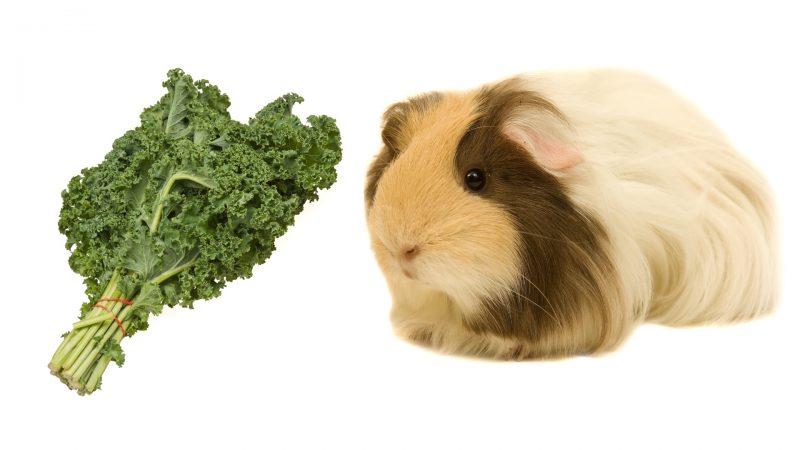
Can Guinea Pigs Eat Kale Daily?
Guinea pigs can’t daily eat kale due to the high levels of calcium. If you feed your guinea pigs kale every day, then you will provide them with a lot of vitamin C which is good for their health. But, there is a problem with calcium and bladder or kidney stones, so you shouldn’t give your guinea pig too much kale.
Usually, one serving of kale (1 cup) is enough for the guinea pig. Also, because it is high in calcium, 2 times per week is more than enough.
Can Guinea Pigs Eat Raw Kale?
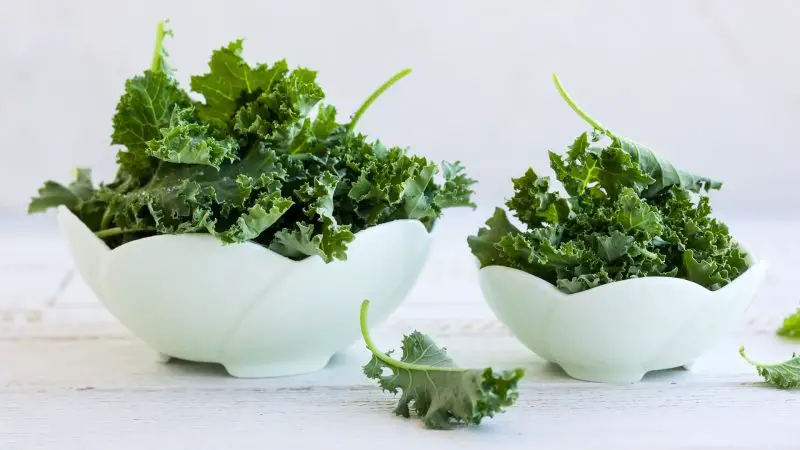
Guinea pigs can eat only the raw kale, while the cooked kale is not recommended for them. This is because guinea pigs simply can’t digest cooked foods well in general.
Also, guinea pigs can eat only fresh kale. But before you give it to them, wash and rinse the leaves to remove any bugs or residue from the pesticides.
Can Guinea Pigs Eat Kale Greens?
Guinea pigs can eat kale greens which are packed with beneficial nutrients for their health, such as different vitamins, minerals, fiber, and many others. Kale greens are also low in calories which is also good.
These leaves are very delicious for guinea pigs. It’s like a treat for them, but you need to be careful with serving sizes because it is high in calcium.
Can Guinea Pigs Eat Kale Stems/Kale Stalks?
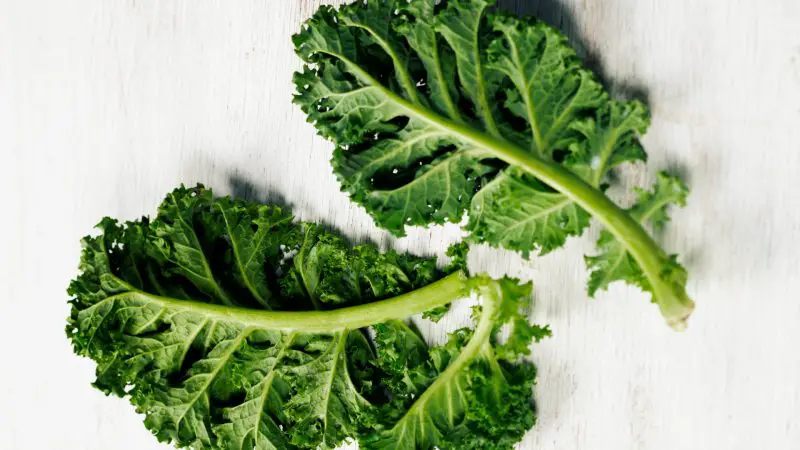
Guinea pigs can eat the stem of kale because the stem is full of vitamins, fiber and nutrients that are good for them. Stems can offer the same benefits as kale’s leaves.
Kale stems have a tough, chewy and fibrous texture that is good for guinea pig’s digestive system and also for their teeth.
Can Guinea Pigs Eat Kale Flowers?
Guinea pigs can eat many types of flowers and they find them very delicious. So, guinea pigs can eat kale flowers. There aren’t really any reasons why they shouldn’t be able to eat them. Just be careful with serving sizes. Kale flowers during the spring and has little blooms that are from light to dark yellow in color.
Can Guinea Pigs Eat Curly Kale?
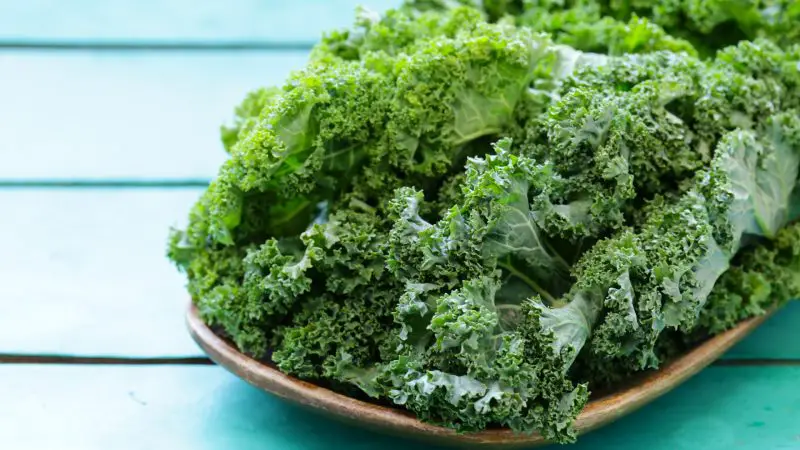
Guinea pigs eat curly kale or dwarf blue curled scotch kale. This type of kale also has numerous nutrients, such as vitamin C, vitamin A, and many others that are very good for the guinea pig’s health.
Curly kale is the most commonly available type of kale and usually has light or dark green curly leaves. The stem of the curly kale is hard and very fibrous. Sometimes, it’s very hard to chop the leaves from the stem.
Can Guinea Pigs Eat Red Kale?
Guinea pigs can eat red kale which is similar to curly kale, but it has dark red leaves and stems, or just red stems and green leaves. Stems and leaves sometimes even look purple.
You can give to your guinea pigs red kale leaves which are very delicious, but stems are good as well. Don’t give them large serving sizes of red kale and definitely not every day.
Can Baby Guinea Pigs Eat Kale?
Baby guinea pigs can eat kale, but not immediately after birth. They need milk from their mothers for the first 3 weeks. After that, you can introduce them to alfalfa hay and other foods such as kale.
Also, they need pellet, timothy hay and later, you can give them gradually fresh vegetables and fruits that have a lot of vitamins, such as vitamin C. There are many nutrients in the kale including the calcium, which is very important for the growth of the baby guinea pigs.
Do Guinea Pigs Like Kale?
Guinea pigs really do like kale and they like almost every greeny and leafy vegetable, such as spinach, cabbage, romaine lettuce, and so on. They will eat kale every time you give it to them because they find it is very delicious.
Still, it’s your responsibility not to give kale to guinea pigs very often and in large serving sizes because of calcium content, even if your guinea pigs enjoy eating it.
What About Frozen Kale for Guinea Pigs?
It’s not recommended to give guinea pigs frozen kale or any other frozen vegetables. As we have said, guinea pigs can’t eat cooked food. In general, every frozen food is previously boiled before freezing.
Guinea pigs can eat only fresh and raw kale, but you can also give them any type of kale that wasn’t previously cooked before being frozen.
Quick Facts on Kale
The following facts about kale will amaze you:
- One serving of kale has more calcium than a mini-carton of milk.
- In the past, kale was called “peasant’s cabbage.”
- Ancient Greeks used kale and similar leafy greens to sober up after a drunk night.
- Kale is from the same family as broccoli, cabbage, and Brussels sprouts.
- New Yorkers eat kale the most out of all the people in the world.
- Raw kale is hard for the digestive system in humans and may cause bloating.
- McDonald’s started selling breakfast meals with spinach and kale.
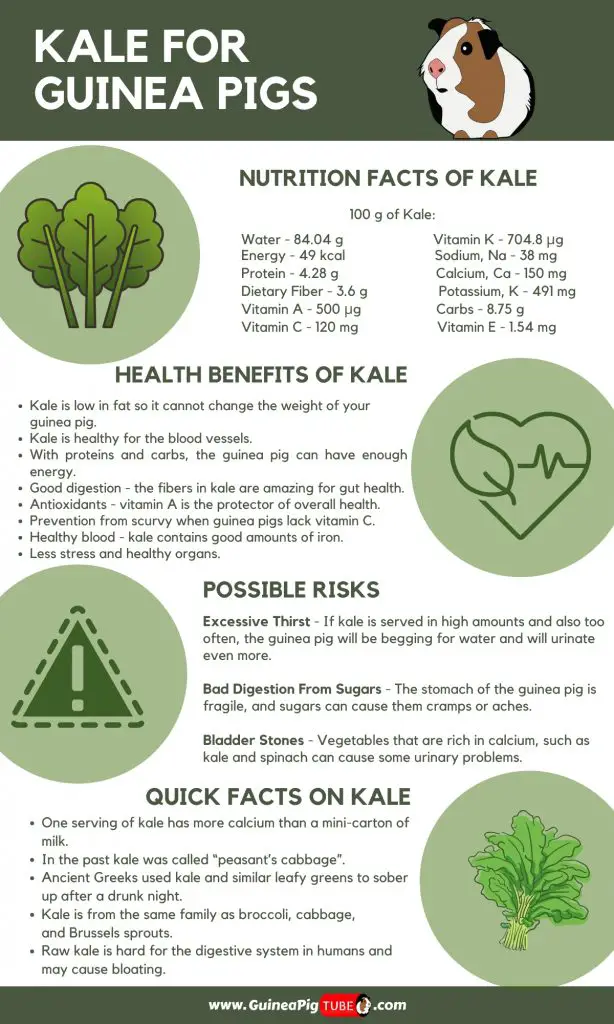
With food, you should be careful what to choose. If you are not sure what to feed them but believe your little piggies deserve some great treats, check our Helpful Guide to the Best Guinea Pig Treats to get some ideas.
We have also made a full list of foods that guinea pigs can and can’t eat (150+ Types of Foods). Be sure to also check our recommended products page for everything you will ever need to assure a happy life for your guinea pigs. Hope this information was helpful and you have found the answer you were looking for.
List of Sources
Diet Composition and Mineral Balance in Guinea Pigs
Dietary Requirements of the Guinea Pig With Reference to the Need for a Special Factor
Metabolic Availability of Vitamin C in the Guinea-Pig
Nutrient Requirements of Laboratory Animals: Fourth Revised Edition
